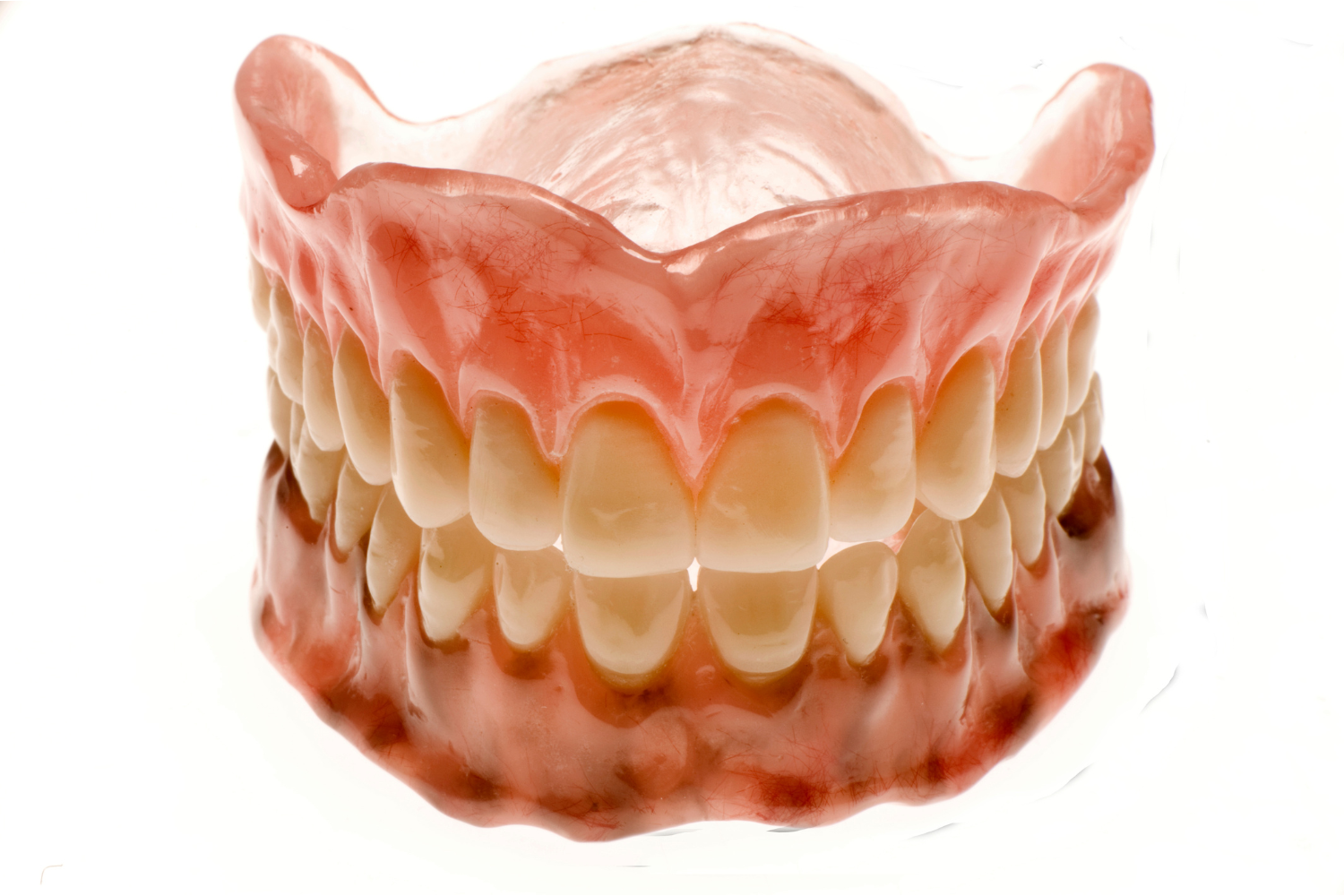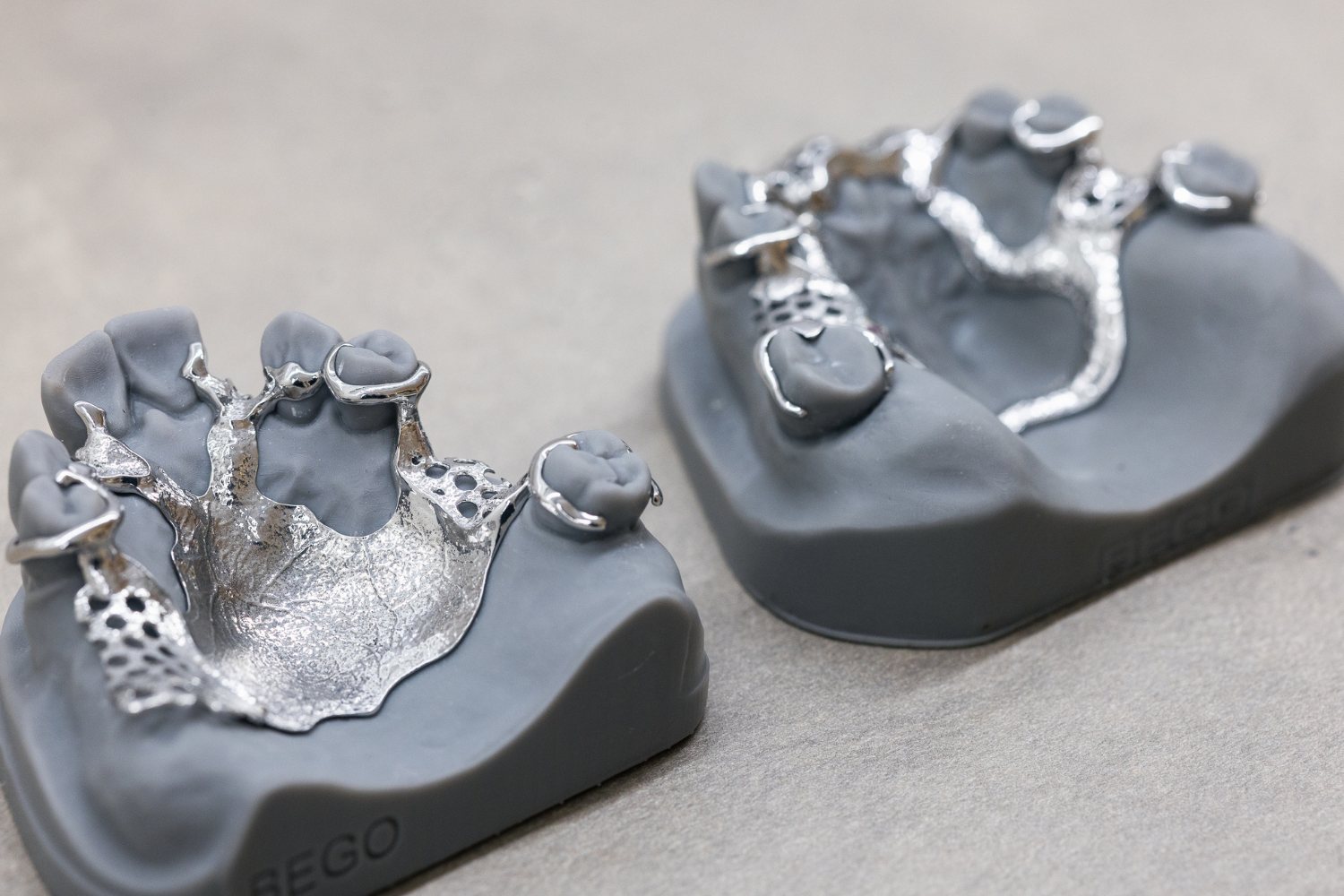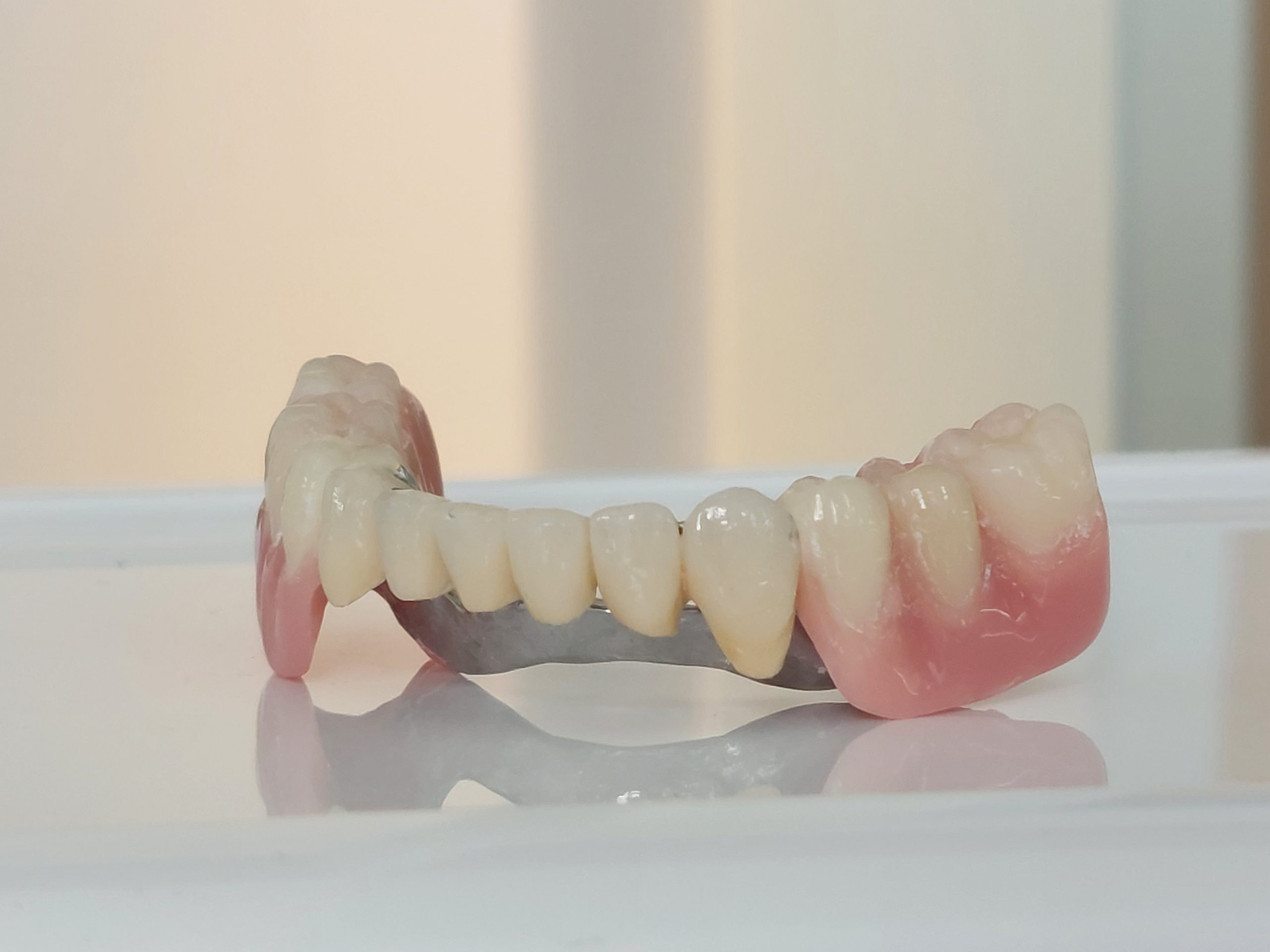Complete and Partial Dentures – A Solution for Teeth Replacement

Complete dentures are used for patients who have lost all teeth in one or both jaws.
They are made of acrylic and rest on the mucosa and underlying bone.
Their stability can be significantly improved with implants, to which the denture is attached for enhanced retention.
Partial dentures are used when the patient still has some natural teeth remaining.
Types of partial dentures include:
- Acrylic dentures – simple and affordable, but less stable.
- Wironit (metal framework) dentures – stronger, more comfortable, and supported by natural teeth using clasps or precision attachments.
- Combination dentures – attached to fixed crowns or bridges using precision systems such as the Press-Ligne attachment.
The choice depends on the oral condition and the recommendation of the dentist.

Combination Prosthetic Works – A Blend of Fixed and Removable Solutions
Combination prosthetic restorations integrate both fixed (crowns, bridges) and removable (partial dentures) components to replace missing teeth, restore function, and achieve natural aesthetics.
They are commonly used when insufficient bone prevents full fixed rehabilitation with implants.
Such restorations usually include:
- Fixed part – crowns or bridges on natural teeth or implants.
- Removable part – a partial denture retained by special connectors such as clasps or Press-Ligne attachments.


Advantages of Combination Restorations
- Greater stability compared to conventional removable dentures.
- Improved comfort, chewing efficiency, and speech.
- More natural aesthetics thanks to hidden attachment systems.
This type of restoration is recommended for patients who lack enough teeth for a fixed bridge but desire a more stable and affordable alternative to implant-supported fixed prosthetics.
